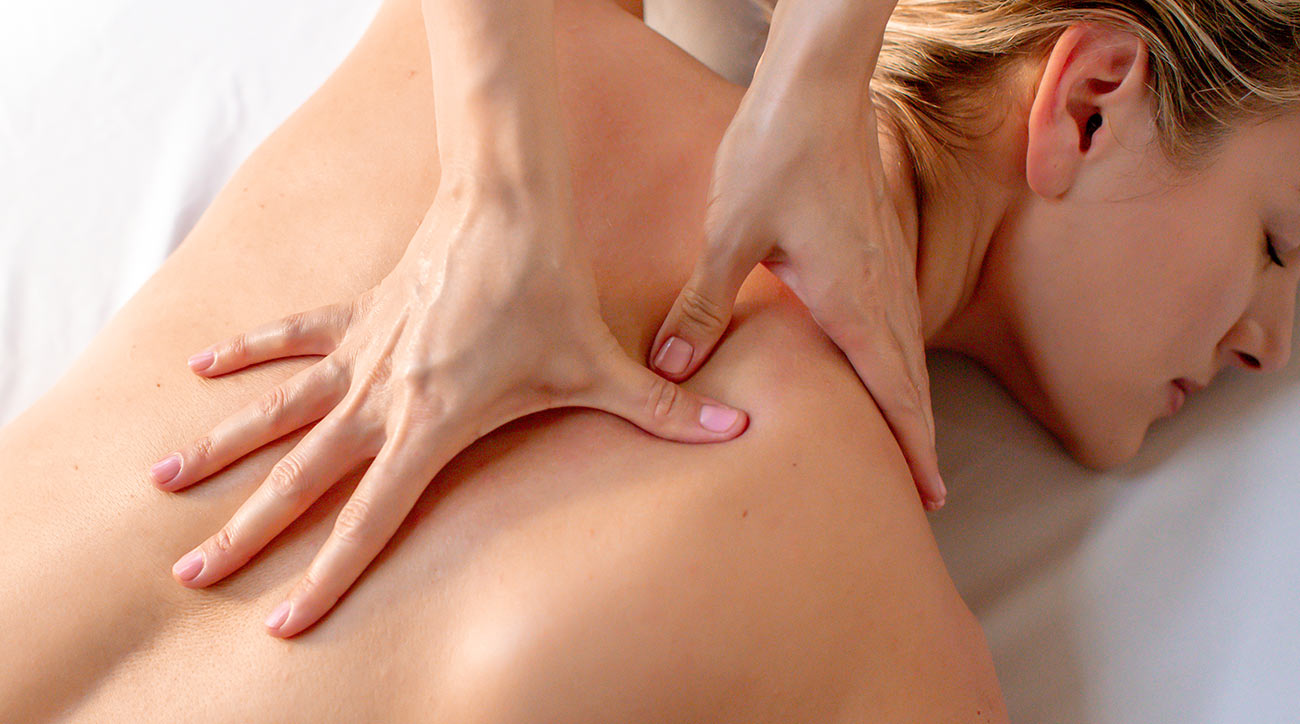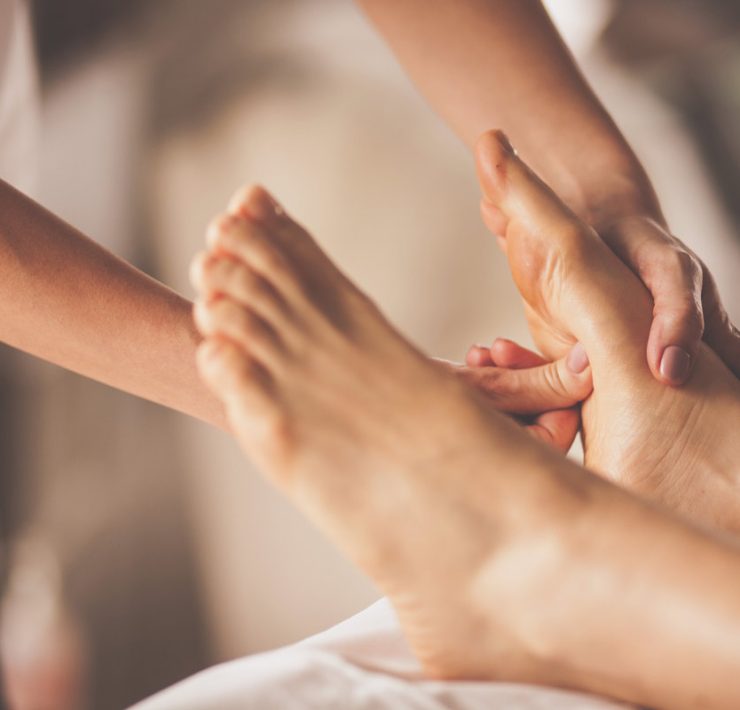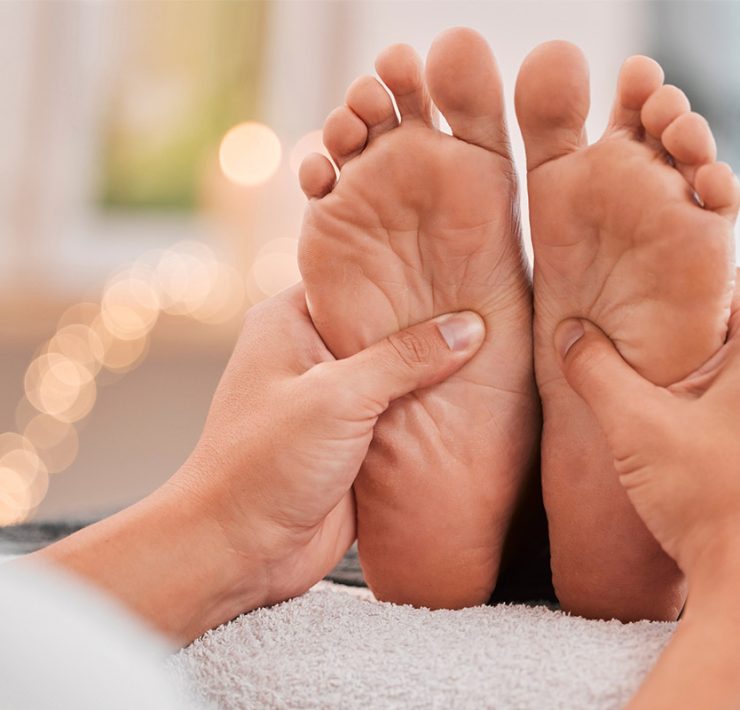Put simply, trigger point therapy is massage designed to treat and relieve trigger points. One simple way to think of trigger points is as small muscle knots, cramps, or spasm. If you have a muscle that always seems tight and sore in your upper back or calf, for example, that may be a trigger point.
Myofascial trigger points, what we commonly refer to as “knots” or muscle spasms, form when sarcomeres, or muscle fibers, contract or tighten, often as a result of injury or strain due to repetitive motion. They are sometimes referred to as “micro-cramps.” In addition to causing localized pain, trigger points can also result in “referred pain,” or pain in other parts of the body that may not at first appear related (e.g. a migraine headache may be caused by a trigger point in the neck or shoulder). Trigger point therapy targets these points to provide effective relief from both acute and chronic muscle pain and other related ailments.
How Does Trigger Point Massage Therapy Work?
While there are other methods of alleviating pain caused by trigger points (such as injections or needling), trigger point massage therapy is certainly the least invasive treatment option. During a trigger point therapy session, a therapist applies pressure to the contracted muscle for between 30 to 90 seconds to release the tension in the muscle, allowing the sarcomere to return to its usual length and easing the pain.
Trigger points, or muscle spasms, can also cause lactic acid to build up, depriving the muscle of oxygen. Relaxing the muscle through massage releases the lactic acid, allowing the return of oxygen and relief of pain.
What are the Benefits?
Trigger point therapy is particularly effective for treating lower back pain, though it can be beneficial in treating pain caused by a wide variety of conditions. Studies published in the Clinical Journal of Pain and the American Journal of Public Health have shown trigger point therapy is effective in relieving tension headaches. Trigger point therapy has also been shown to help people with restless leg syndrome and carpal tunnel. Those suffering from fibromyalgia and myofascial pain syndrome may find trigger point therapy to be useful as part of their long-term pain management regimen.
Because trigger points often occur as a result of muscle injury or overuse, it is often also recommended for athletes, or those whose work involves frequent repetitive motion. Pregnant women may also find trigger point therapy helpful in relieving lower back and hip pain (though certain trigger points have been linked to premature labor and contractions, so women seeking trigger point therapy during pregnancy should look for a therapist who is also trained in prenatal massage).
Trigger point pain is often misdiagnosed as other pain conditions, like sciatica, migraines, or even toothaches.
Who Shouldn’t Seek Trigger Point Therapy?
First off, if you’re looking strictly for a relaxing massage, then this modality may not be for you, as it requires the therapist to apply a sufficient amount of pressure to release muscle tension.
Trigger point therapy is contraindicated for those with certain medical conditions, including: osteoporosis, acute rheumatoid arthritis, degenerative joint disease, advanced diabetes, hyperesthesia, blot clots, goiter and obstructive edema. You should also avoid trigger point therapy if you are taking blood thinners or cortisone treatments.
As with any type of massage, if you have recently had a surgery, or if you have any acute injuries or illnesses, you should consult your doctor before booking a treatment.
What Can I Expect from a Trigger Point Massage Session?
A trigger point massage combines broad, smooth strokes with deeper, targeted pressure on trigger points. Your therapist will begin the session by going over which areas or trigger points you would like to focus on so they can tailor the massage to best address your specific pain.
During a trigger point therapy massage, the therapist applies pressure to the trigger point using their fingers, knuckles or elbows. Due to the concentration of pressure and the fact that trigger points are themselves painful to the touch, you may at first experience some pain or discomfort. Your therapist should check in with you periodically to make sure the pressure is neither too great or too little. If at any point the pressure becomes overly painful, communicate this to your therapist immediately so they can adjust.
It’s normal to experience some discomfort or mild pain after a trigger point massage as the muscles respond to treatment, but it should dissipate within 36 hours.
Can I Try Trigger Point Therapy Myself?
There are some self-massage trigger point options that you can try at home:
- Use your fingers to find a trigger point and press as firmly as you can tolerate for 30-90 seconds. You can repeat this for up to 5 minutes at a time, up to 5 or 6 times per day. Note: While discomfort is normal, you should stop if you experience severe pain or tingling and contact a medical professional, as there may be an underlying injury.
- Use a self massage tool such as a foam roller or massage gun. Be sure to use as directed, avoid overuse, and consult a professional for advice on how safe and effective use, particularly if you are pregnant or have a chronic condition such as fibromyalgia or multiple sclerosis. Note that foam rollers in particular should not be used by those with neurological, systemic, connective tissue or chronic pain conditions, as well as those with certain cancers, bleeding disorders, scoliosis or osteoporosis.
- Use a percussive massager to loosen tense muscles. If you’re using a percussive massage device, like the Hypervolt, you don’t need to apply extra pressure to trigger points—simply move the device slowly along the muscle, spending a bit more time on areas where you feel extra tension.
Note that the same rule applies for manual massage tools and electronic ones: Talk to your doctor before using any type of massage device if you are pregnant or have any medical conditions or serious injuries. Enjoy releasing that tension!







